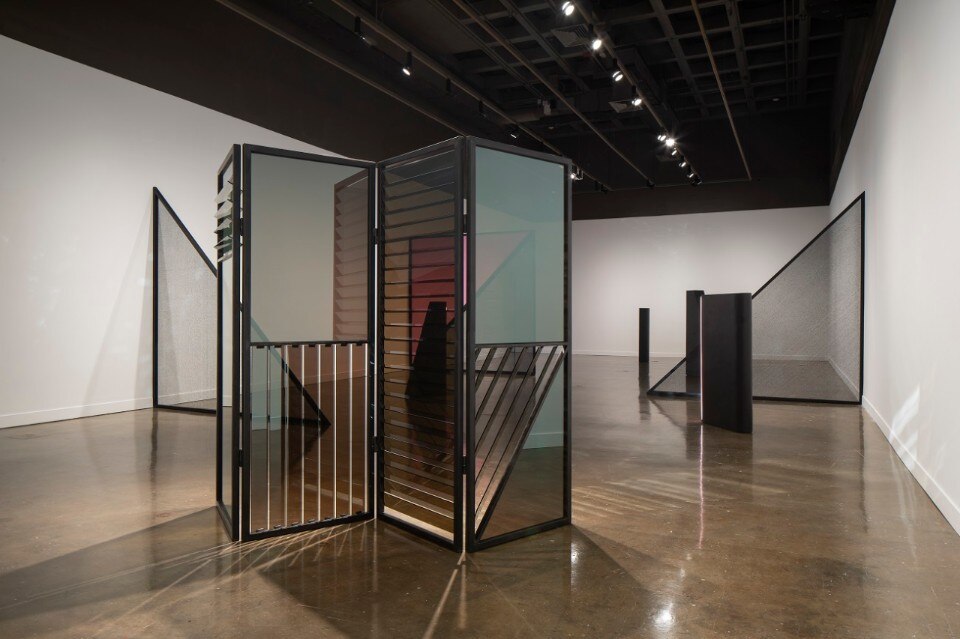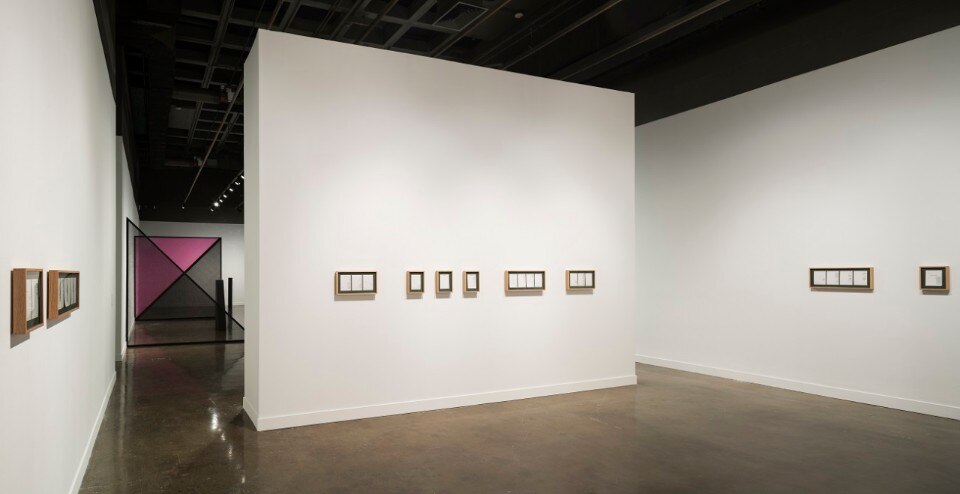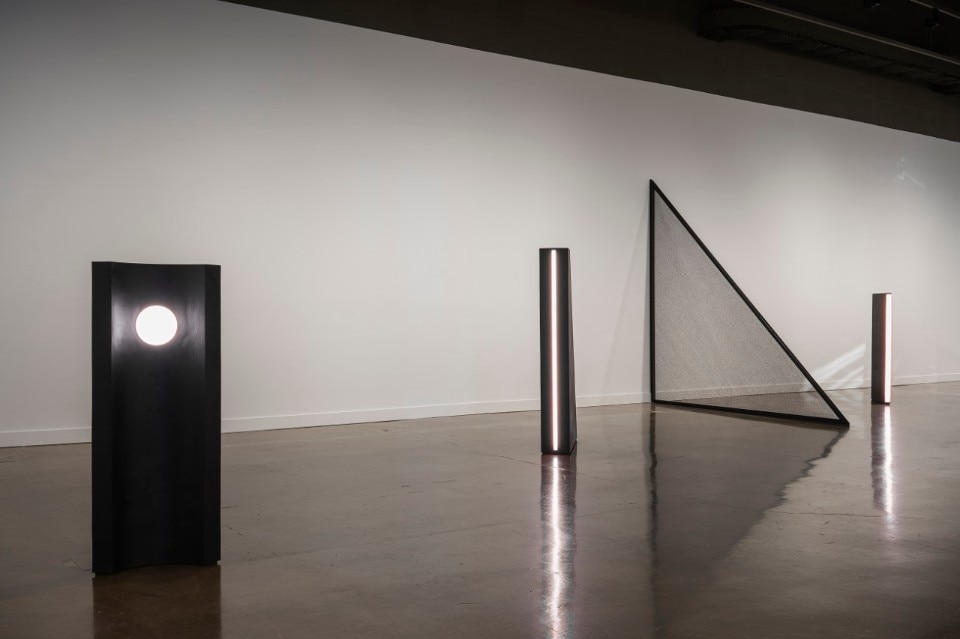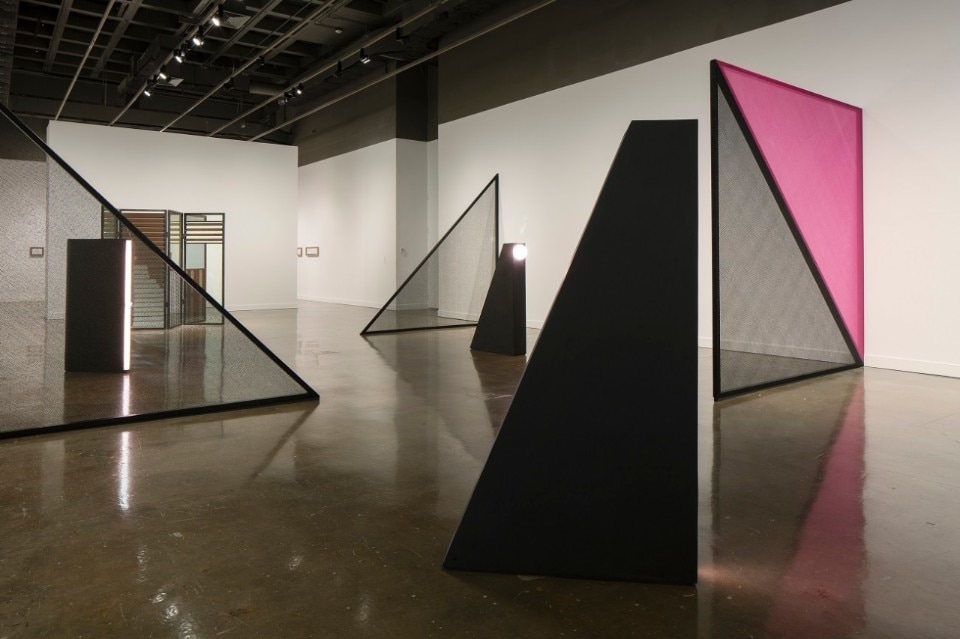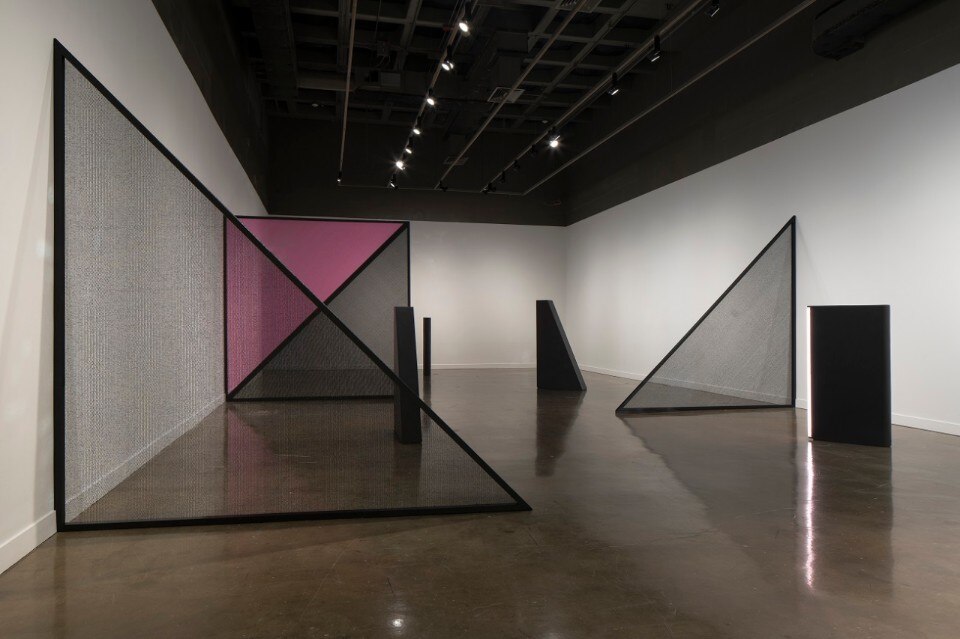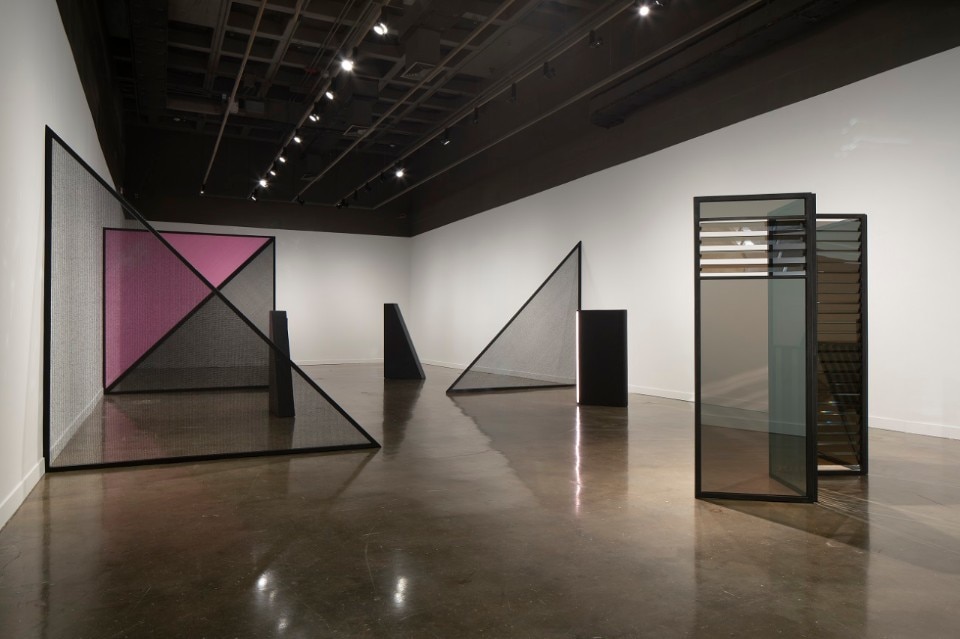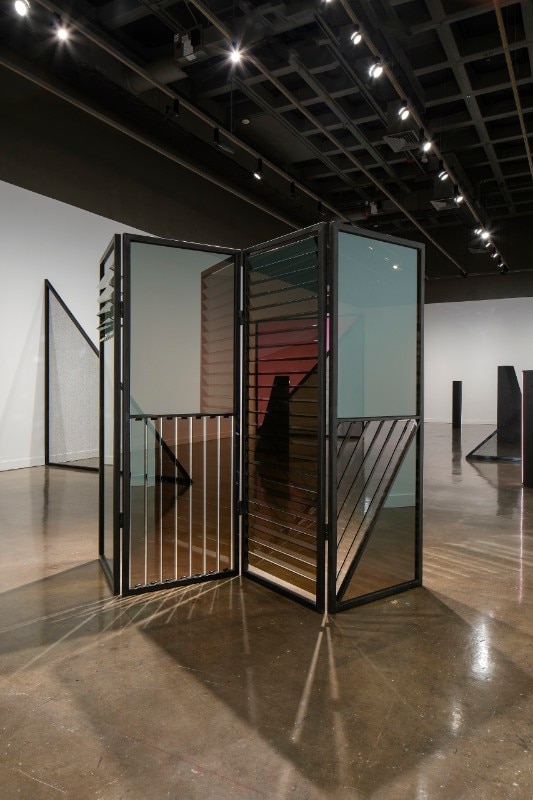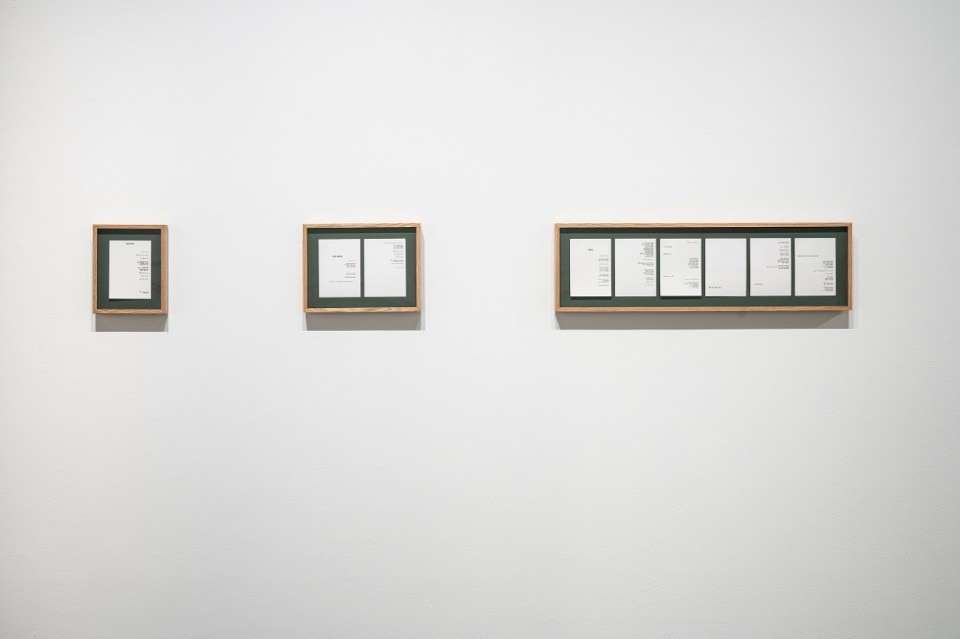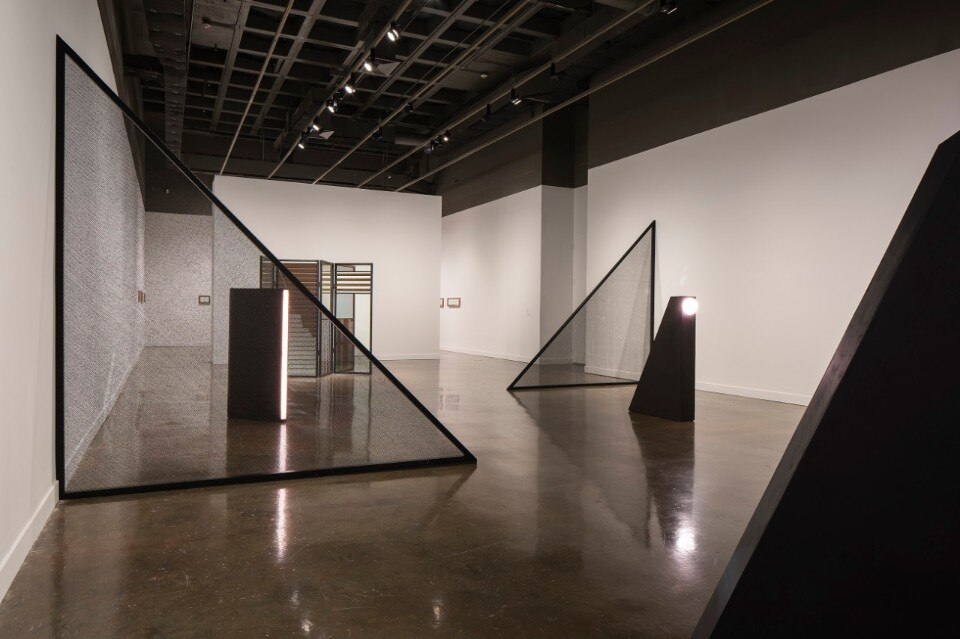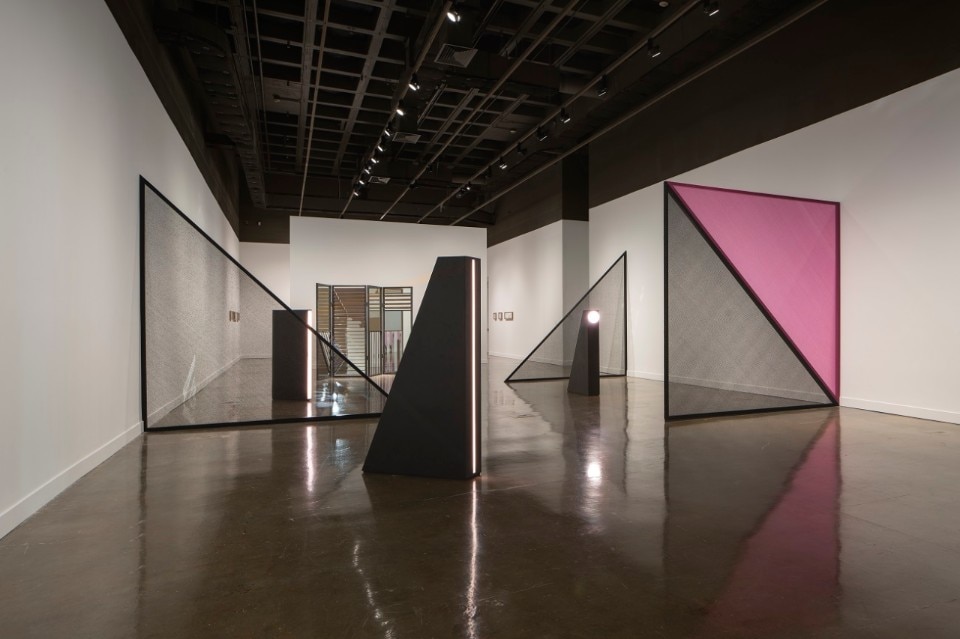In a sophisticated darkness, Kapwani Kiwanga’s installations seek to communicate without language, in a primordial and visual way. Kapwani Kiwanga: Safe Passage, her first monographic solo show in Massachusetts, complements a proper vocabulary of formal abstraction with sensory visual experiences that include light and tactility. MIT List Visual Arts Center halls combine industrial fabrication and craftsmanship exploring the affective power of materials in destabilising the distinction between modern and pre-modern.
As the contemporary art museum at MIT, the List Center presents a dynamic programme of six to nine special exhibitions in its galleries each year, including evolving site-specific work by emerging artists known as List Projects, as well as a broad range of educational activities, events, and scholarly publications. Originally named the Hayden Gallery, MIT established this center for the visual arts in 1950 to provide a dedicated structure upon which to build the institute’s existing relationship to the arts. It was renamed the List Visual Arts Center in 1985 in recognition of a gift from Vera and Albert List, and relocated to its current, expanded location in the Wiesner Building, which was designed by MIT Alumnus I. M. Pei (B.S. Architecture, 1940) and Partners Architects. In 2013, the List Projects exhibition programme was inaugurated. This exhibition initiative which focuses on the work of emerging artists has featured Gabriel Abrantes (2013), Ken Okiishi (2013), Kambui Olujimi (2013), Pauline Curnier Jardin (2014), and Sergei Tcherepnin (2014). And in 2015 the List presented and supported Joan Jonas at the Venice Biennale.
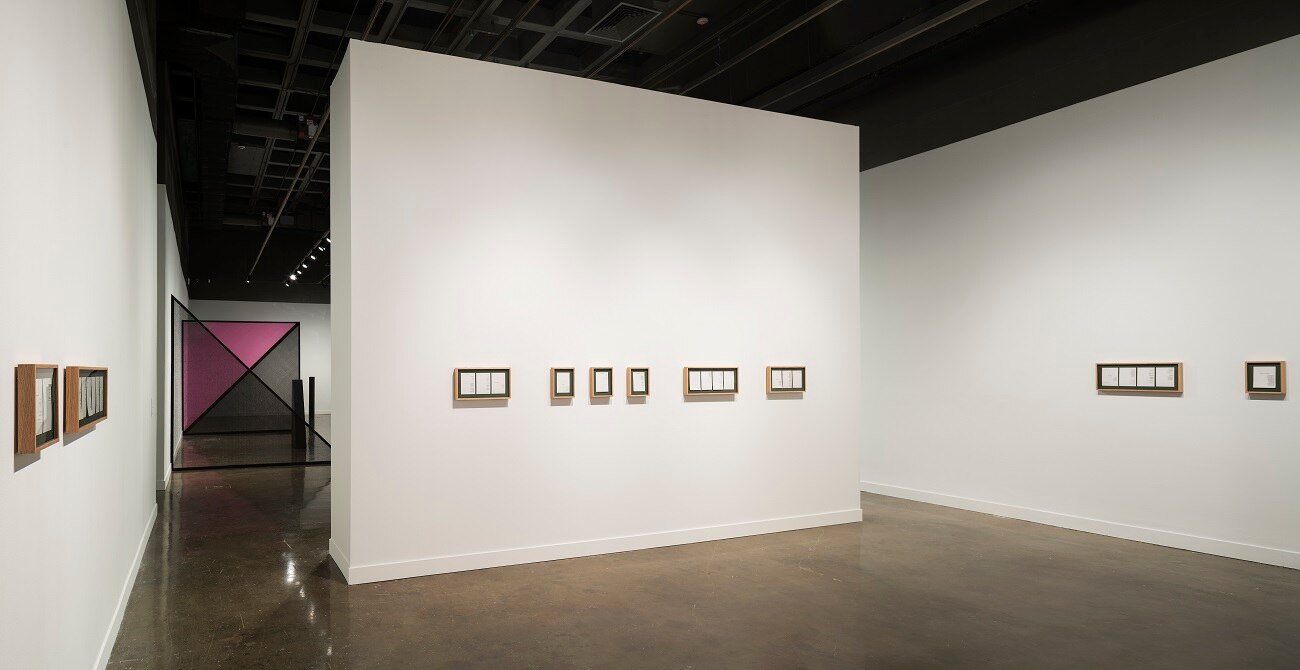
Kapwani Kiwanga at MIT introduces only recent projects like Glow (2019), a new body of works commissioned by the List Center, encompassing four sculptures that take their point of departure from colonial-era “lantern laws.” Enacted in Boston and throughout New England in the late 1700s, lantern laws required all slaves to carry a lit candle after sunset if unaccompanied by a white person. As such, any person who appeared not to be white and who failed to carry a lantern at night, slave or not, could be stopped and questioned.
Explosions of nationalism, chauvinism, racism, religious fanaticism and populisms are among the most disruptive factors of civil togetherness to be known (worse than social, ecological or economical tensions), and they have an impact on practically all dimensions of collective life: culture, economy, daily life, prejudices, habits, and of course politics and religion. There is thus a need for a strong capacity to face and dissolve ethnic conflicts, as Kiwanga suggests through her lenses. This means that in every ethnic community one needs to bring to the fore those people and forces that are capable of self-critique with regards to their own community, people who must never transform themselves in defectors, if they want to keep their roots and remain credible. Precisely in the case of conflicts, it is essential to relativize and diminish the drives that lead the different ethnic communities to seek external support (protective powers, external interventions, etc) and put in value the elements of common linkages to borderline territories.
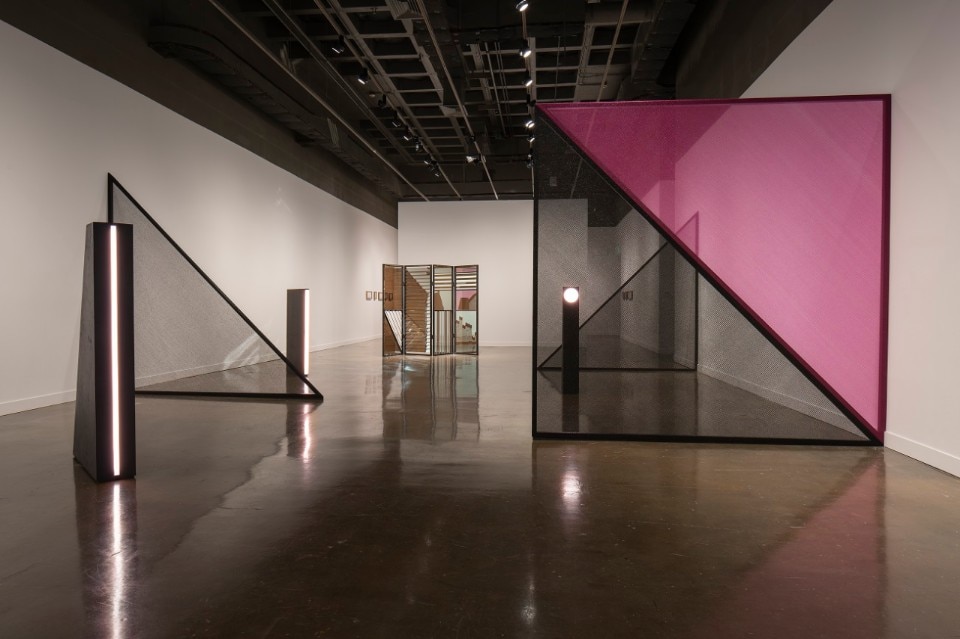
Kapwani Kiwanga’s recent work traces the impact of colonialism and its pervasive legacy by considering historical narrative and the archive. Her work is research-driven, instigated by marginalized or forgotten histories, and articulated across a range of materials. At the core of her exhibition at the List Center is an engagement with racialized surveillance and the systems used in monitoring and controlling the movement of bodies in space. Kiwanga follows the lineage of surveillance and positions it in relation to blackness in America, from its roots in slavery to the role that technology performs today. For instance, Jalousie (2018) juxtaposes the familiar uses of two-way mirrors in interrogation rooms and corporate settings with angled slats, referencing the ubiquitous domestic window shutters found in homes from tropical climates to New England. Both material and design pose the shifting of power depending on one’s position. Reflected in the two-way mirror of Jalousie are partitions created from shade cloth, an agricultural textile used in large-scale industrial farming around the world.
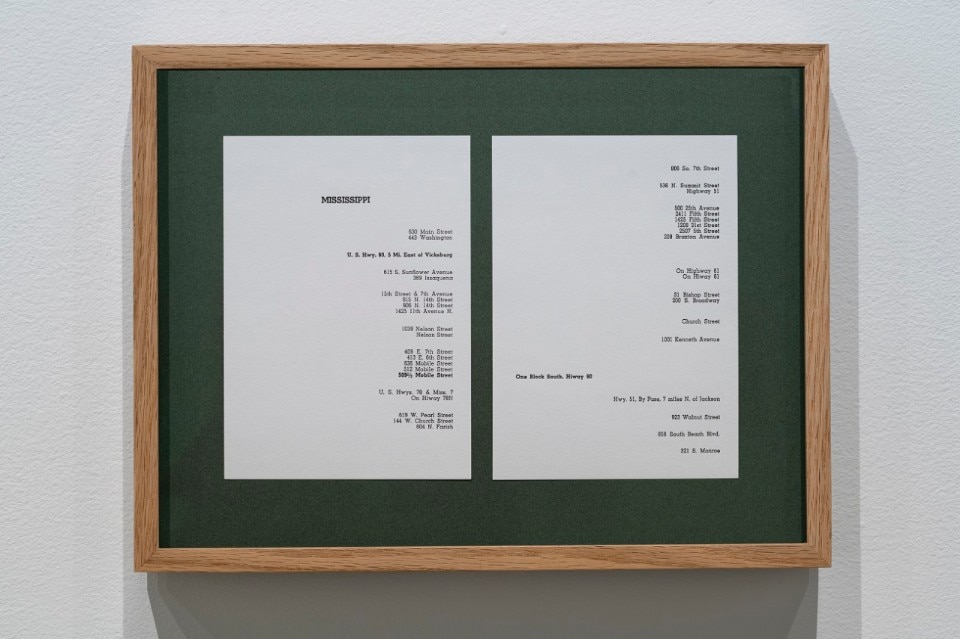
Kiwanga adopts a material almost exclusively used to cover land in order to augment the yield of organic resources, repurposing it as an architectural screen to refract and filter the other works on view. This strategic, forced visibility and accompanying suspicion of racialized bodies, and the legal prerogative to engage, endures. Beyond the regional history of New England, Greenbook (1961) (2019), continues a project in which Kiwanga sources material from The Negro Motorist Green Book. This annual state-by-state listing published from 1936 to 1966 served as a resource to provide safe restaurants, service stations, and lodging for African-American motorists traveling across the United States. Here, Kiwanga pulls from the 1961 edition, the year of the Freedom Riders, a group of civil rights activists who rode public buses from Washington, D.C. into the South to challenge the practice of keeping public buses segregated after having been ruled unconstitutional by the Supreme Court in 1956.
In Kapwani Kiwanga: Safe Passage, Kiwanga’s artistic explorations stem from material-based concerns, accompanied by anthropological, philosophical and emotionally charged readings of historical events and figures. In fact, Kiwanga studied Anthropology and Comparative Religion at McGill University in Montreal and Art at l’école des Beaux-Arts de Paris. The show reveals with force her ongoing research empowered by underlying references to art history, literature and political history, through which she re-interprets some of her recurrent themes: migration, postcolonial diasporas, enforced exile and social mobility. As a result, Kapwani Kiwanga: Safe Passage links various geopolitical contexts and histories in an attempt to understand and comment on our times. Kiwanga’s translation from the political and historical into the formal and abstract demonstrates her convictions that historical narratives can be made comprehensible, without being linguistically explanatory or didactic.
- Exhibition Title:
- Kapwani Kiwanga: Safe Passage
- Opening dates:
- From February 8 to April 21, 2019
- Organized by:
- Yuri Stone
- Venue:
- MIT List Visual Arts Center, Hayden Gallery
- Address:
- 20 Ames Street, Building E15, Cambridge, MA 02139


